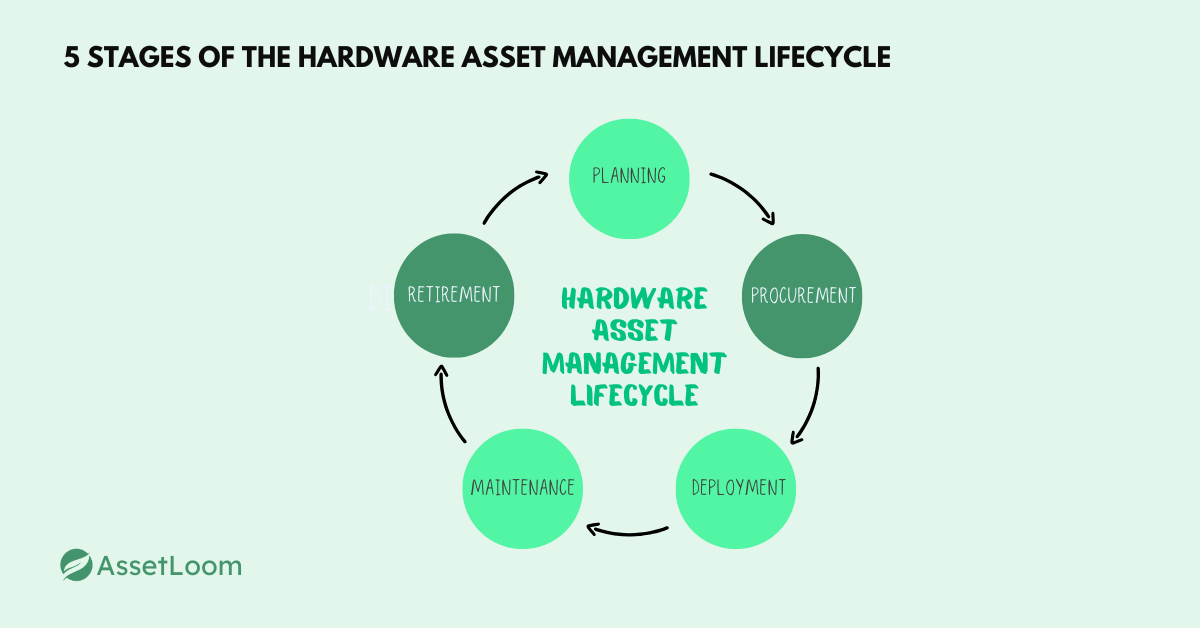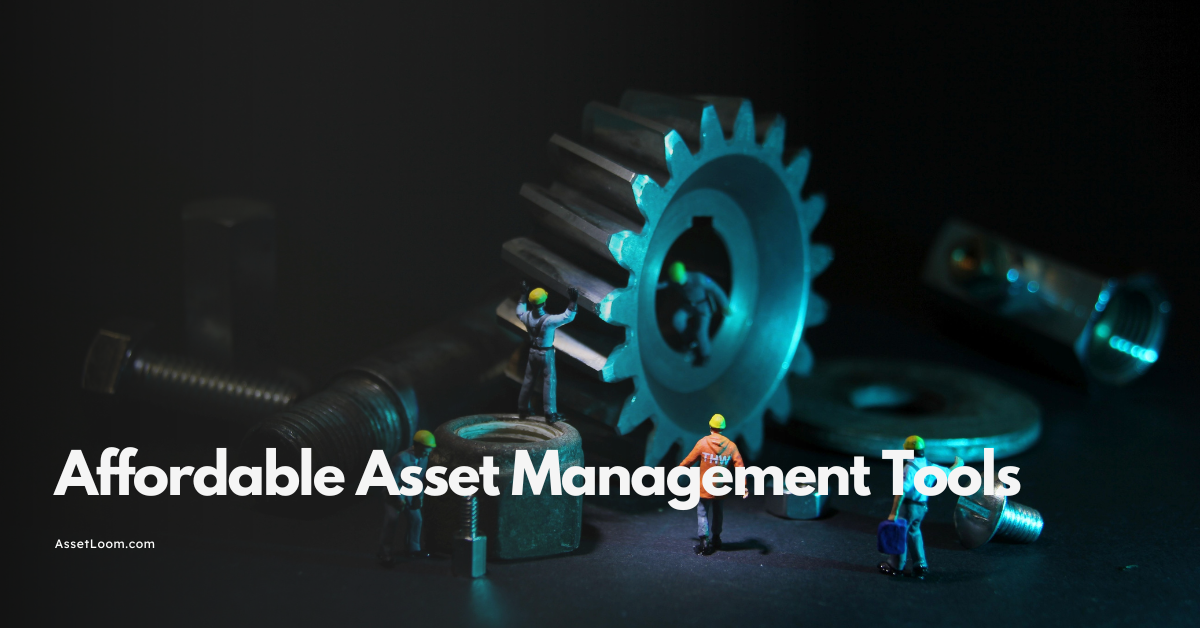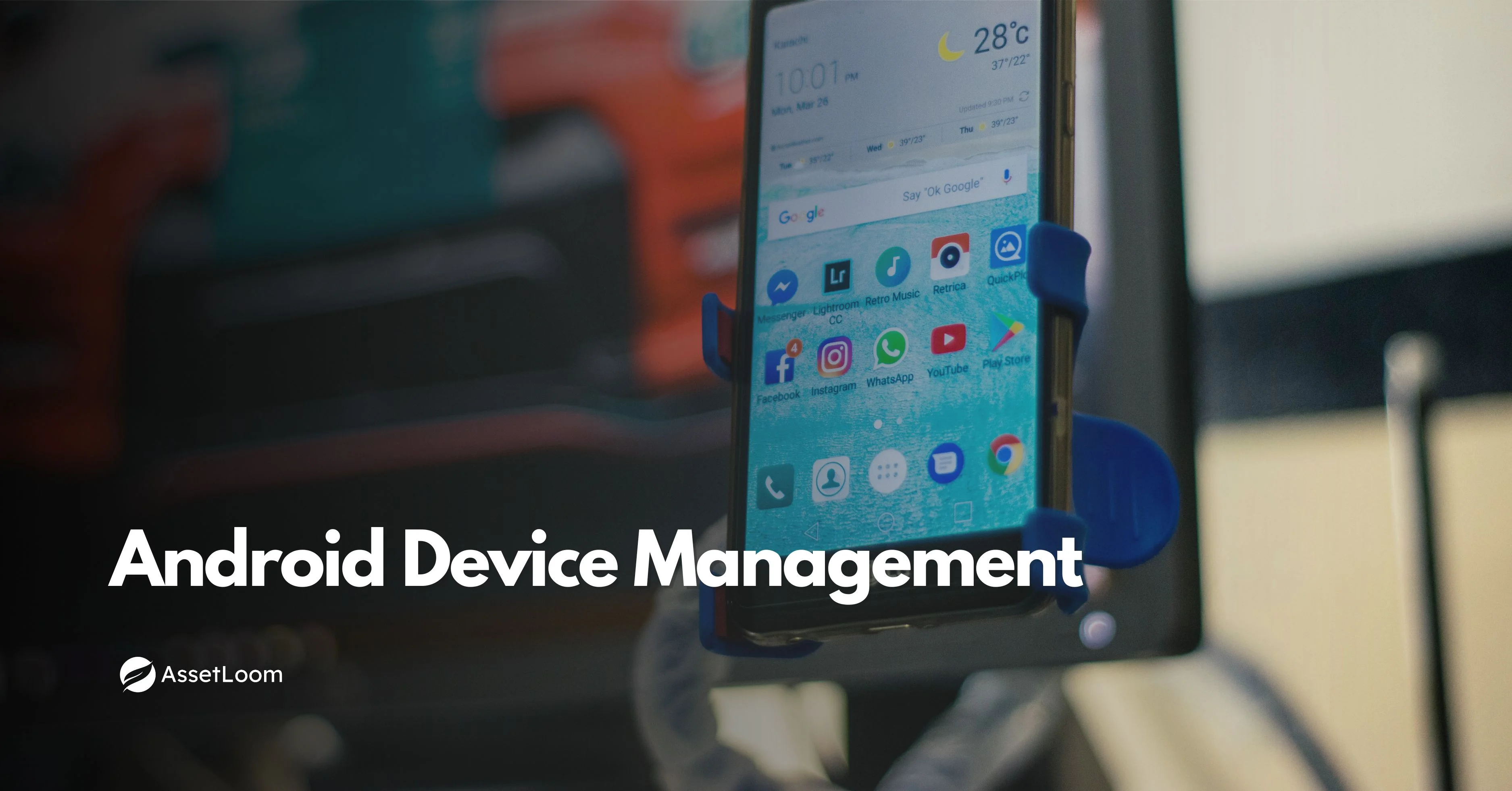The 5 Stages of the Hardware Asset Management Lifecycle You Need to Know
Explore 5 stages of the hardware asset management lifecycle—Planning to Retirement—to save money, boost efficiency, and reduce IT risks.
Hardware Asset Management (HAM) is all about tracking and managing IT hardware like laptops, servers, and networking gear. The **hardware asset management lifecycle** makes this easier by breaking it into five clear stages: Planning, Procurement, Deployment, Maintenance, and Retirement. It’s a smart way to keep costs down, stay within rules, and run an efficient IT setup. Knowing these steps helps you avoid wasting money and keeps your hardware working for you.
This guide explains each stage so you can improve how your business handles IT assets. Whether you’re dealing with lost equipment or rising expenses, the right approach makes a difference. Master these steps, and you’ll turn a confusing mess of hardware into a smooth, cost-saving system. Let’s get started with what this lifecycle really means.
What is Hardware Asset Management Lifecycle?
The hardware asset management lifecycle is a step-by-step way to manage IT hardware from the day you buy it until you dispose of it. Essentially, it’s designed to keep things running smoothly, save money, and follow rules. This process includes five stages: Planning, Procurement, Deployment, Maintenance, and Retirement. For example, it helps you get the most value from your hardware while keeping risks like data leaks or extra costs in check. Clearly, it’s a system every business with IT gear should understand.
So, why does this lifecycle matter? First, it stops you from losing assets or overspending. Next, it ensures your hardware is fully used before being replaced. Finally, it keeps security strong and meets legal standards. By following these stages, you can avoid common headaches and make better decisions about your IT setup.
5 Stages of the Hardware Asset Management Lifecycle

Stage 1: Planning
Planning launches the hardware asset management lifecycle, and it’s where you get ahead of the game. So, what’s it all about? It’s your chance to map out what hardware your business actually needs—no guesswork allowed. Here’s what you do:
- Identify hardware needs based on your goals.
- Set a budget that keeps spending in check.
- Make rules for tracking every piece of gear.
For example, you pick equipment that fits today and scales tomorrow. This stage is your blueprint for success.
Now, let’s talk about why planning is a big deal. First, it saves you money by stopping overbuying. Next, it cuts waste by ensuring hardware matches your systems. Basically, without this step, you’re risking chaos and extra costs down the road.
However, people mess this up sometimes. One mistake is skipping lifecycle planning, which leads to overspending fast. Another is ignoring compatibility, leaving you with gear that doesn’t work together. Avoid these, and you’re on the right track.
Stage 2: Procurement
Procurement is the next stop in the hardware asset management lifecycle, where plans turn into action. So, what’s the deal here? It’s all about getting the hardware you need without breaking the bank. Here’s how it works:
- Pick vendors and negotiate smart deals.
- Buy or lease gear like servers, laptops, or networking tools.
- Record details—think serial numbers and warranties—for tracking. For instance, you’re locking in equipment that fits your budget and goals. This stage is where the rubber meets the road.
Now, why should you care? First, good procurement keeps costs low by avoiding bad buys. Next, it sets up success by ensuring gear matches your needs. Basically, this step keeps the lifecycle smooth and saves you from headaches later.
But watch out—mistakes happen. One slip is not recording assets, so you lose track of them fast. Another is skipping maintenance plans, leaving you unprepared for upkeep. Dodge these, and you’re golden.
Stage 3: Deployment
Deployment is the third step in the hardware asset management lifecycle, where your gear finally gets to work. So, what’s happening here? It’s about putting hardware into action across your business. Here’s what you do:
- Install and set up equipment like computers or servers.
- Assign gear to teams or people who need it.
- Connect it to your IT network for smooth use.
For example, you’re getting laptops to employees or servers online fast. This stage brings your plans to life.
Now, why is deployment a big deal? First, it cuts downtime so work keeps moving. Next, it boosts efficiency by getting gear where it’s needed. In short, a solid rollout keeps the lifecycle humming and your team productive.
However, things can go wrong. One error is not monitoring gear, which leads to glitches. Another is losing track of who has what, causing waste. Skip these pitfalls, and you’re set.
Stage 4: Maintenance
Maintenance is the fourth step in the hardware asset management lifecycle, keeping your gear in top shape. So, what’s this all about? It’s making sure your hardware stays reliable over time. Here’s what’s involved:
- Update and fix equipment as needed.
- Manage warranties or service deals.
- Track use to see how it’s holding up.
For instance, you’re keeping laptops running smoothly or servers humming along. This stage is all about longevity.
Now, why does maintenance count? First, it prevents breakdowns that stop work cold. Next, it extends gear life, saving you replacement costs. Simply put, this step keeps the lifecycle strong and your budget happy. But, slip-ups happen. One is skipping regular checks, leading to sudden failures. Another is not tracking use, so you miss gear sitting idle. Avoid these, and your hardware stays solid.
Stage 5: Retirement
Retirement wraps up the hardware asset management lifecycle, closing the loop on old gear. So, what’s the scoop? It’s about safely removing hardware that’s done its job. Here’s what you do:
- Wipe data to keep it secure.
- Recycle or resell equipment if possible.
- Update records to show it’s gone. For example, you’re clearing out old laptops without leaving risks behind. This stage ends things right.
Now, why does retirement matter? First, it protects against leaks by securing data. Next, it keeps you legal, meeting rules like privacy laws. In short, this step ensures the lifecycle finishes strong and safe. However, watch out for slip-ups. One is sloppy disposal, risking data breaches or fines. Another is not updating records, messing up audits. Skip these errors, and you’re good to go.
Best Practices for Managing the Hardware Asset Lifecycle
Want to make the hardware asset management lifecycle work perfectly for your business? Here’s how to do it with clear, simple steps that save time and money. Start by using one system, like HAM software, to keep an eye on all your gear—laptops, servers, printers, anything with a plug—so you always know where it is. Next, automate tasks like software updates or maintenance alerts to cut down on manual work and catch problems before they grow. For example, imagine spotting a failing server early instead of dealing with a crash later. These best practices make the difference, so check them out:
- Track everything in one place: Use a single tool to list all assets, making it easy to see what you have.
- Automate where you can: Set up tools to handle updates and send reminders, keeping things smooth.
- Check assets often: Run regular audits to make sure your records match reality and stay within the law.
- Train your team: Train staff on the rules so everyone knows how to handle gear properly.
- Plan for scalability: Build a system that grows as your company adds more tech or people.
- Prioritize security: Protect data with strong rules, especially when old gear gets retired.
- Measure performance: Look at how gear is used to cut waste and plan better buys. By following these tips, you’ll keep your hardware management simple, safe, and smart—every step of the way.
Conclusion
The hardware asset management lifecycle—Planning, Procurement, Deployment, Maintenance, and Retirement—is your roadmap to better IT control. So, what’s the takeaway? These five stages help you save money, boost efficiency, and lower risks like data leaks or legal trouble. For example, planning stops overspending, while retirement keeps you safe. Together, they turn a messy pile of gear into a system that works for you. Add those best practices—like tracking everything in one place or automating tasks—and you’ve got a winning strategy.
Now, it’s your turn to act. Take a look at your own hardware setup—are you losing gear or spending too much? Start using these steps today to fix that. By mastering this process, you’ll cut costs and strengthen your IT for the long haul. In short, the hardware asset management lifecycle isn’t just a guide—it’s a tool to build a smarter, safer business. Get started and see the difference.

Subscribe for Expert Tips and Updates
Receive the latest news from AssetLoom, right in your inbox.


